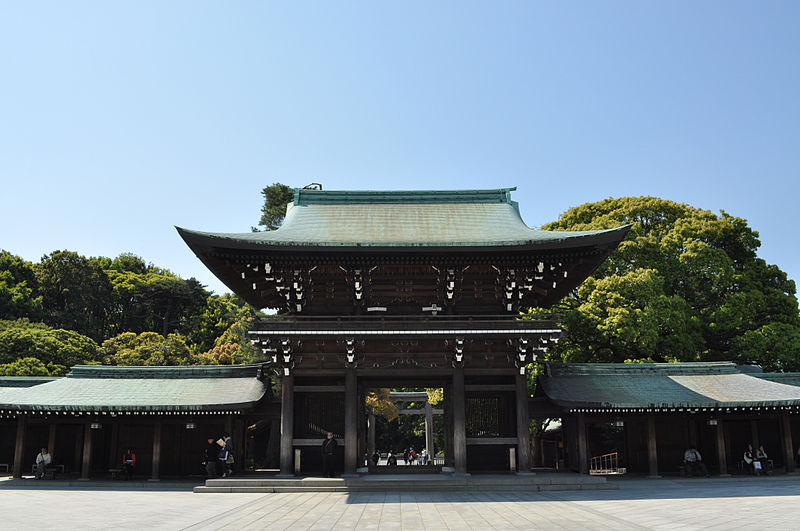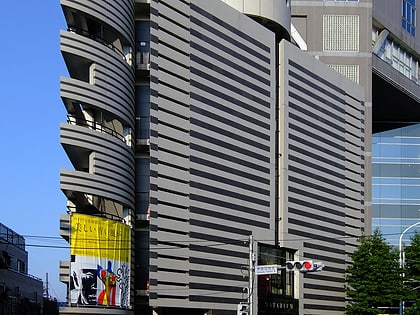Meiji Shrine, Tokyo

Facts and practical information
Nestled in the bustling heart of Tokyo, the Meiji Shrine (Meiji Jingu) stands as a serene testament to Japan's rich history and cultural heritage. Dedicated to the deified spirits of Emperor Meiji and his consort, Empress Shoken, this Shinto shrine is a tranquil oasis amid the city's modernity. Surrounded by a lush, evergreen forest that spans 170 acres, the shrine provides a peaceful retreat for both locals and tourists seeking solace from Tokyo's fast-paced urban environment.
Constructed in 1920, Meiji Shrine was built in the traditional nagare-zukuri style, characterized by its harmonious blend of Japanese cypress and copper. The shrine's architecture reflects a deep reverence for nature and the divine, with its simple, yet elegant lines inviting a sense of contemplation and respect. The torii gate, standing at an impressive height of 12 meters, marks the entrance to the shrine grounds and is one of the largest in Japan, crafted from 1,500-year-old cypress.
Upon entering the expansive grounds, visitors can follow tranquil paths lined with thousands of donated barrels of sake and French wine, symbolizing the international friendships cultivated during Emperor Meiji's reign. The shrine complex includes the Naien, or inner precinct, which houses the main shrine buildings and the treasure museum displaying personal belongings of the emperor and empress. The Gaien, or outer precinct, contains the Meiji Memorial Picture Gallery, featuring a collection of murals depicting the events of the Meiji era.
Meiji Shrine is not only a place of spiritual significance but also a venue for traditional Shinto weddings and seasonal festivals. The shrine's atmosphere is particularly enchanting during the New Year when millions of visitors partake in Hatsumode, the year's first prayers. Spring also brings the vibrancy of the annual spring festival, celebrating the natural beauty and cultural events that reflect the changing seasons.
Open to the public throughout the year, Meiji Shrine invites visitors to participate in its daily rituals, such as offering prayers at the main hall or writing wishes on ema, small wooden plaques. The surrounding Yoyogi Park complements the shrine's serene environment, offering a spacious area for leisure activities and relaxation.
1-1 Yoyogikamizonochō, Shibuya City渋谷区 (明治神宮)Tokyo 151-8557
Meiji Shrine – popular in the area (distance from the attraction)
Nearby attractions include: Omotesando Hills, Tokyo Metropolitan Gymnasium, Yoyogi National Gymnasium, Yoyogi Park.
Frequently Asked Questions (FAQ)
When is Meiji Shrine open?
- Monday 5 am - 6 pm
- Tuesday 5 am - 6 pm
- Wednesday 5 am - 6 pm
- Thursday 5 am - 6 pm
- Friday 5 am - 6 pm
- Saturday 5 am - 6 pm
- Sunday 5 am - 6 pm
Which popular attractions are close to Meiji Shrine?
How to get to Meiji Shrine by public transport?
Bus
- 北参道入口 • Lines: 神宮の杜ルート (9 min walk)
- Kita-sando • Lines: 池86 (10 min walk)
Metro
- Kita-sando • Lines: F (10 min walk)
- Yoyogi • Lines: E (14 min walk)
Train
- Sangubashi (11 min walk)
- Harajuku (11 min walk)








 Metro
Metro









